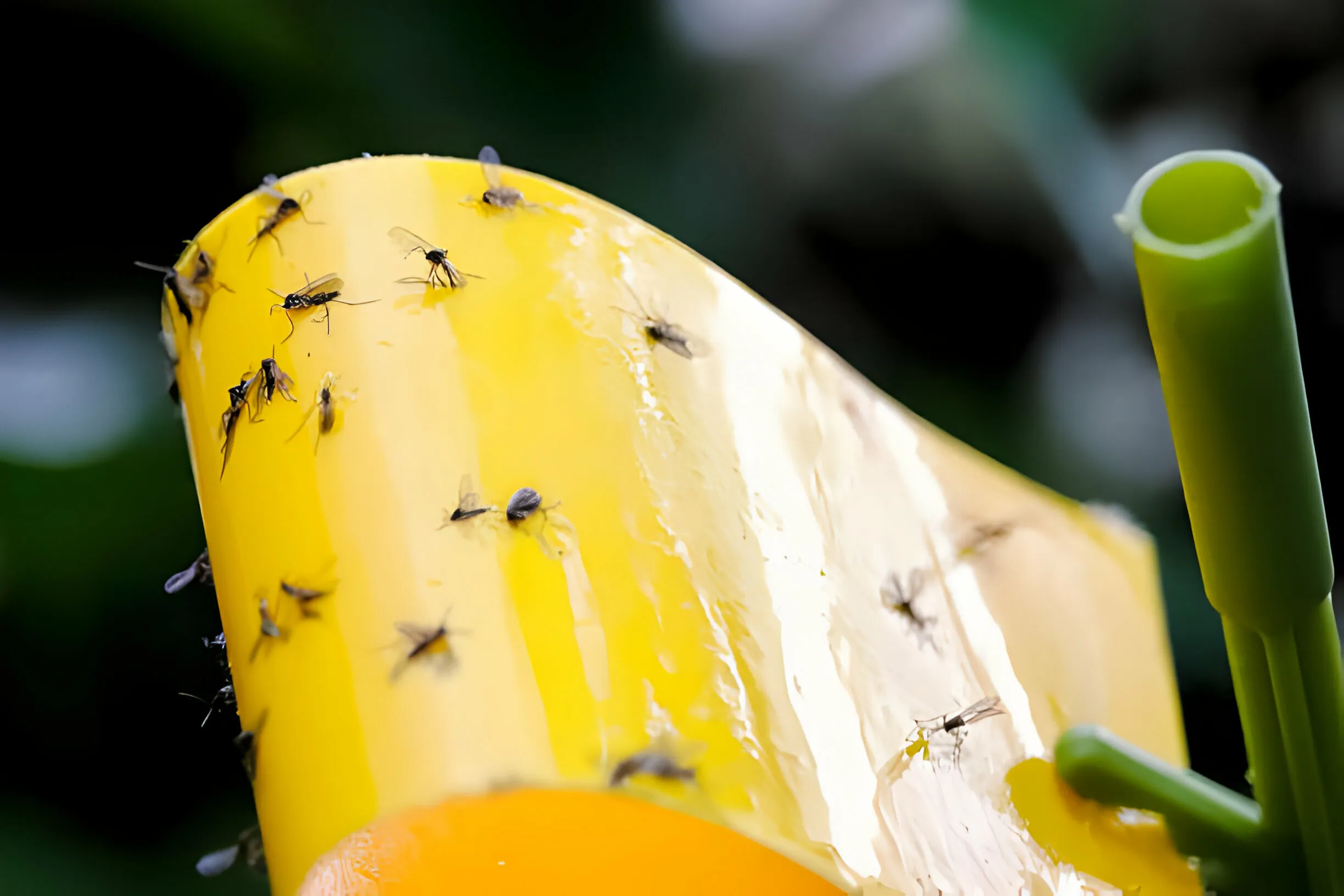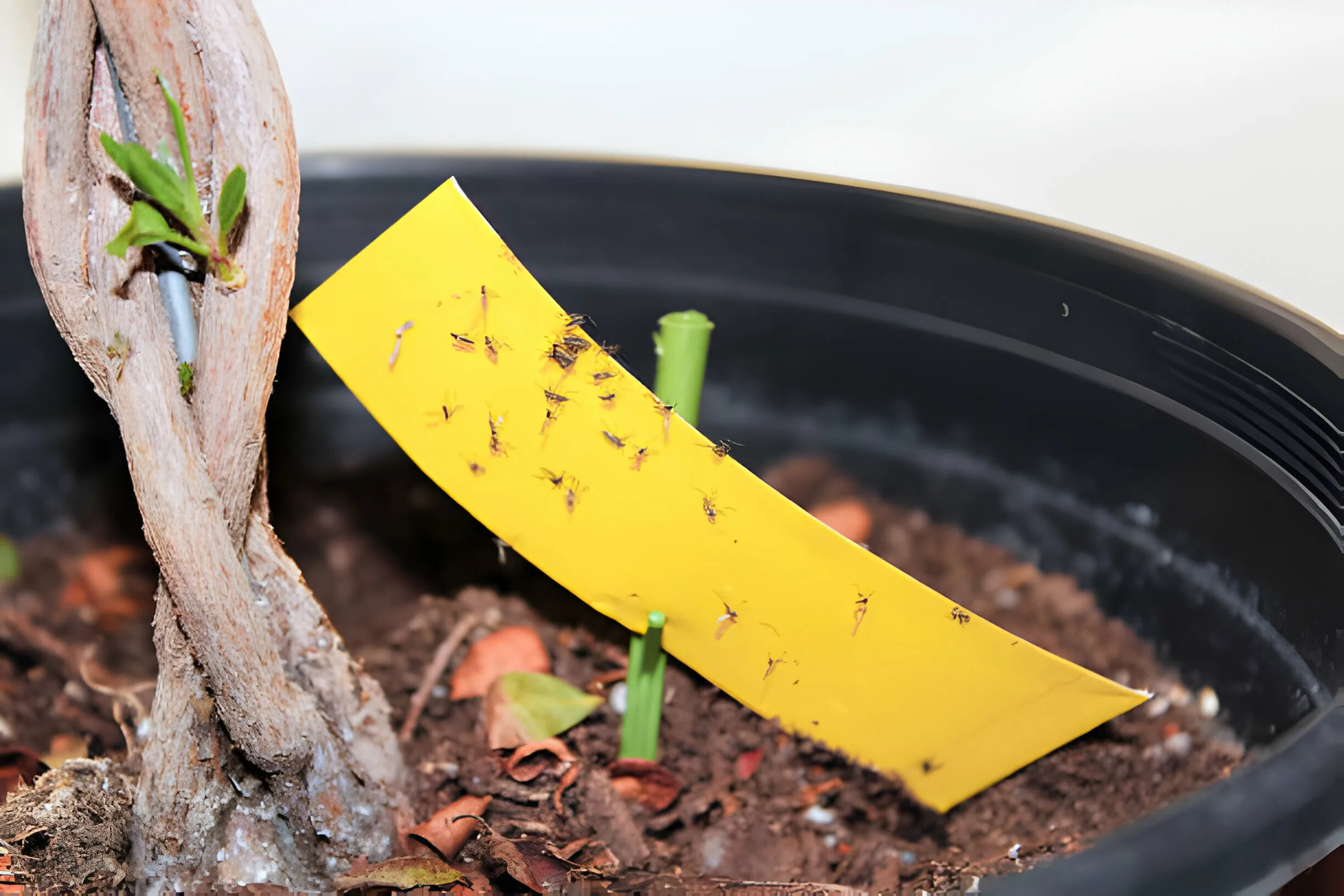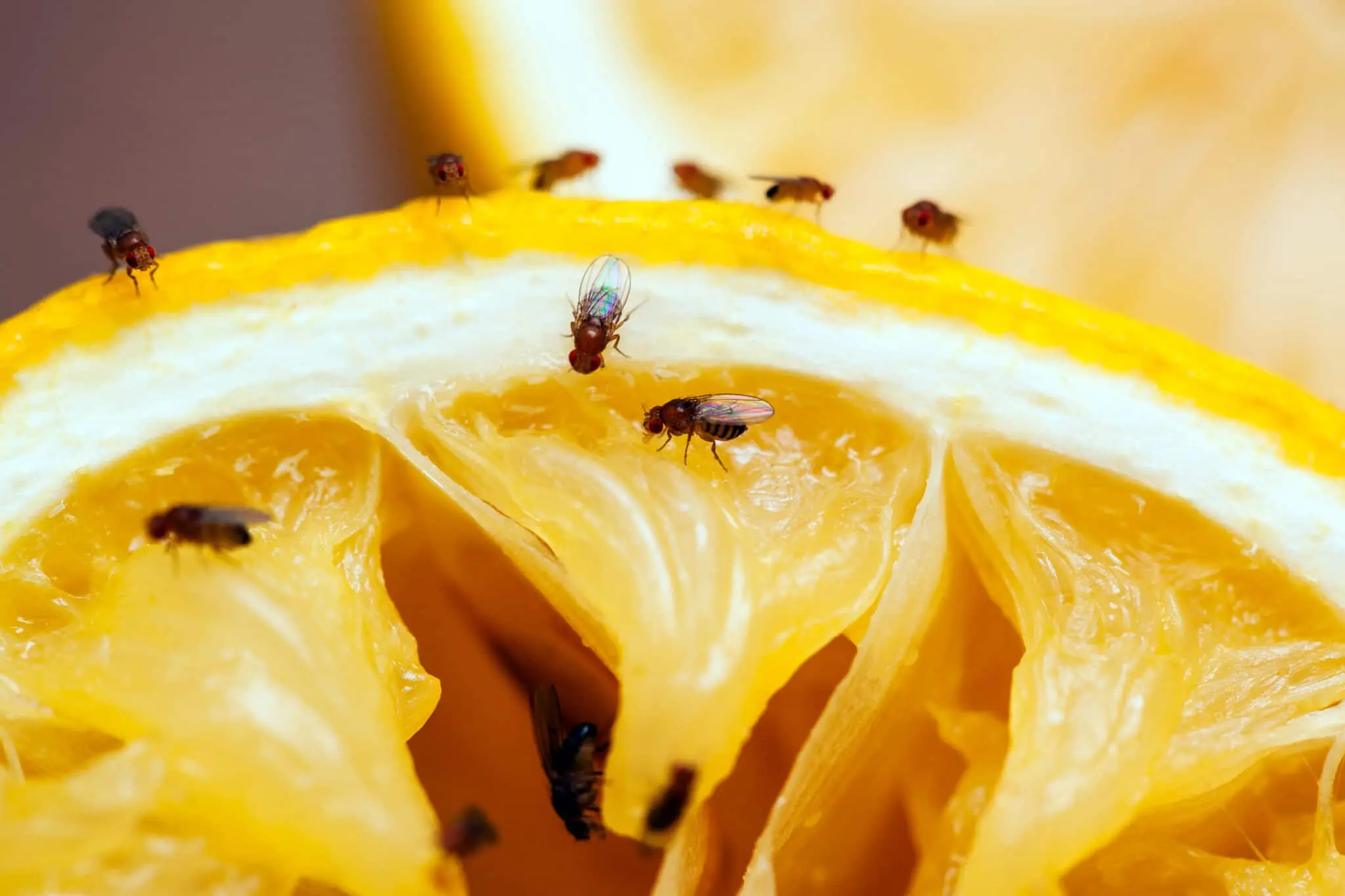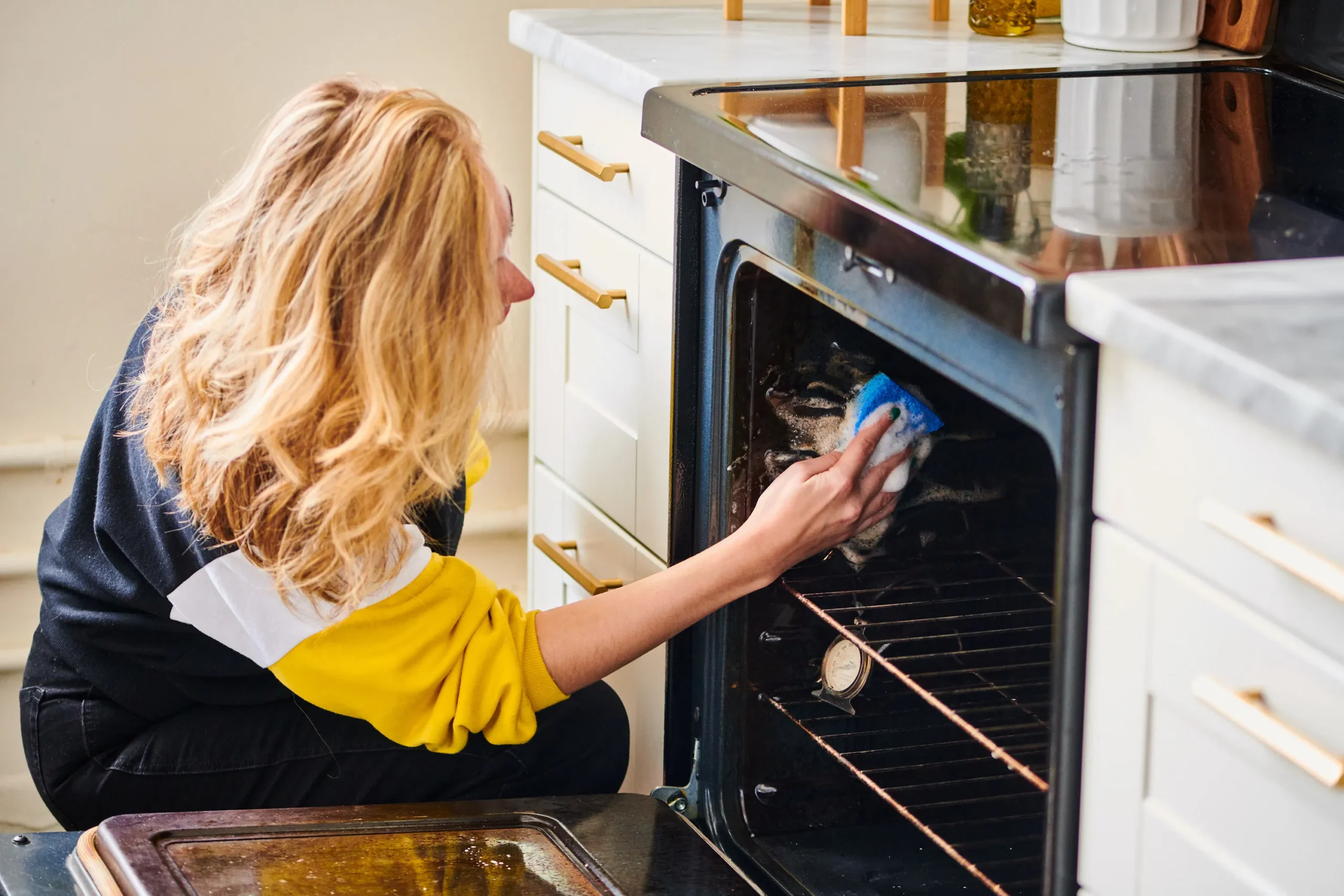Gnats can be very annoying, and you may have been asking how to get rid of gnats. Don’t worry we’ve got you covered.
Gnats can be unpleasant, bothersome, and sometimes dangerous when they appear unexpectedly, and several items in our houses attract them.

Fresh fruit, tempting snacks, and blossoming flowers, for example, all attract these pesky pests. In addition to removing these gnat magnets from counters, there are many home cures available to help you get rid of gnats without going to the shop.
Homemade choices are quick and easy victories that you can attempt, and the best part is that they employ natural ingredients that you most likely already have on hand.
How to Get Rid of Gnats
Gnats are little flying insects that can bite or not bite. You can relax knowing that the majority of indoor gnats are not biting and do not carry disease.
However, these unwanted visitors are a nuisance, and it is critical to deal with them before an infestation worsens.
The first step in combating gnats is to identify the type of gnat that is buzzing around your environment.
1. Drain Flies: These microscopic pests are frequently found in or near drains, sewers, septic tanks, and sites where sewage has leaked.
2. Fruit Flies: Gnats are drawn to rotting or fresh fruits and vegetables, wet organic materials, and liquids such as soft beverages, wine, and vinegar.
3. Phorids Flies: Phorids, like drain flies, congregate near garbage, drains, and rotting fruits and vegetables.
4. Fungus Gnats: When organic matter in the soil begins to decompose, these are frequently spotted around overwatered houseplants. Their larvae feed on plant roots, causing yellowing and dropping leaves or entire plants to wilt and die.
Fungus gnats can also transmit a pathogen that causes damping-off, a disease that kills seeds before they sprout and weakens or kills seedlings shortly after sprouting.
Gnats breed on decaying organic debris and wetness, so you’ll need to determine where they’re coming from.
This should be very clear because they prefer to congregate around the problem, which aids in recognizing their type. Use the following tips to get rid of gnats and learn how to avoid them in the future.
Simple Home Remedies to Get Rid of Gnats
The good news is that there are numerous methods for eliminating gnats in and around your home.
What’s even better? The majority of these solutions are simple, inexpensive, and successful. Here are a few do-it-yourself ideas to consider.
1. Trap Fruit Flies with Vinegar and Sugar
You probably have some apple cider vinegar and sugar in your kitchen or pantry, and these two substances can help you get rid of gnats.
Fill a bowl near the infestation with vinegar before adding a spoonful of simple sugar, which will attract the gnats.
The vinegar will eventually kill them, but you must also be able to keep them in the dish long enough for that to happen.
Cover the bowl with plastic wrap and puncture small holes in the top, or add a small amount of dish soap to the vinegar and sugar mixture.
If you have an open wine bottle (red works best) that has gone rotten but don’t want to throw it away, replace it with vinegar and proceed with the rest of the instructions.
2. Use Produce that’s Gone Bad
Try a similar strategy to lure and trap fruit flies. Put a few pieces of rotten fruit, like a banana or an apple, in a dish, cover it securely with plastic wrap, and pierce small holes in the plastic so the gnats can get in but not out.
They’ll perish in the handmade trap. This is a fantastic method to remind your family to consume fruit before it spoils.
3. Battle Drain Flies with Bleach
If pests are circling the sink drain, grab a bottle of bleach and combine half a cup with a full gallon of water. Then, slowly pour the diluted solution down the drain to destroy any gnats or larvae.
Alternatively, you can get the same results by using a commercial drain cleaning. After using bleach, make sure to ventilate the space thoroughly.
4. Get Rid of Gnats with a Candle
This strategy necessitates being on standby after dark, but it is a simple solution. Fill a pan halfway with water and dish soap, then add a candlestick with a tall, tapering candle in the center.
After lighting the candle, ensure that the remainder of the room is dark. After a while, you’ll observe that the gnats are drawn to it and eventually die from the heat or by falling into the soapy concoction below.
5. Stock up on Sticky Traps
If all else fails, or you’re not interested in building a DIY solution, consider placing a store-bought fly trap near where gnats congregate, such as flypaper, cards, or ribbons.
Some of these products are intended to be placed in the soil next to a potted plant to attract fungus gnats.
When the sticky side is filled, throw it and start over. You can also use a bug zapper to catch smaller insects, or if the problem persists, contact a reputable pest management business.
Store-bought sticky traps can be hazardous to pets if eaten or chewed on, so read the packaging carefully and keep an eye on your pets when using them.
How to Remove Gnats from Indoor Plants

Here are some simple methods for getting rid of gnats on indoor plants:
1. Get Them to Accept Sticky Cards
Gnats are attracted to yellow, and they can be caught on yellow cards that have an adhesive covering on them. Use little cards or trim larger ones into small squares for optimal results.
Place them in the soil surrounding your potted plants, or fasten them to skewers or twigs that are inserted into the pots. Empty the traps into an outdoor trash can after they are filled.
2. Diatomaceous Earth for Food
DE, as it’s commonly called, is an organic, abrasive powder that you may purchase and use to sprinkle your plants’ dry soil. The gnats will be trapped there until their dehydration kills them.
It will not work if you put it on moist soil. Place some sand on top of your potting soil before applying the DE to ensure it stays dry. While using it, water your plants from the bottom.
3. Wet the Soil
One type of naturally occurring bacterium found in soil is called Bacillus thuringiensis (Bt). Bt var. israelensis (Bti) kills fungus gnat larvae.
Make a Bti drench and soak the soil in your potted plants according to the directions on the product. It will coat the roots of the plants without damaging them and kill the larvae of fungus gnats that attempt to feed on them.
4. Allow plants to Somewhat Dry Out and Repot
In order to ensure that any gnat eggs or larvae in the soil perish, let your plants dry out a little bit in between waterings.
Make drainage holes if your pots don’t already have them. Repot your plants in fresh potting soil and clean containers if the gnats are returning.
How to Remove Gnats From Outside
Drop a mosquito dunk designated as suitable for use around pets and wildlife in a bucket or watering can instead of dousing outside plants with a Bti drench.
Allow it to remain in the water long enough for the dunk’s insect-killing bacteria to be released. Cover the soil of your outdoor plants with water. To ensure that any gnat larvae in the soil are killed, continue doing this for a few weeks.
Electric pest traps frequently kill beneficial insects as well, so avoid using them for gnats. UV light-attracting gnat traps might be effective, but they only catch the adults the larvae are permitted to develop and breed.
There are a lot of gnats surrounding the outside lighting. Replace your lights with low-voltage or yellow “bug lights” to deter them. You may also leave lights near doors and windows off.
Insects that bite but are invisible to the unaided eye could be small, biting midges, commonly known as no-see-ums and sand gnats.
When the weather is still and it’s damp outside, stay indoors or wear protective clothing to avoid them. Additionally helpful could be bug-repellent products and apparel.
How to Prevent the Appearance of Gnats
After you’ve successfully eliminated the gnats that were troubling you, it’s time to concentrate on prevention.
So, how can you keep them from coming back? To keep gnats at bay, practice the following habits regularly.
1. Maintain Low Humidity in Your Home
Gnats prefer humid and moist conditions. In the summer, ensure the air conditioner works correctly, check for leaks around the house, and add a dehumidifier to any moist areas.
2. Look after the Trash
Your garbage can should have a tight-fitting cover while not in use, especially if it is in the kitchen. Regular garbage removal is necessary, as well as the removal of any indoor compost.
3. Steer clear of overwatering houseplants.
The moist soil in indoor planters may provide gnats with a place to breed. Thus, give them simply sporadic watering or think about low-maintenance plants that need very little water to flourish.
4. Maintain Drastic and Dry Drains
Pay close attention to your kitchen sink and drain since this is a significant gnat breeding area.
Use a drain stopper overnight, keep the area as dry as possible, and clean it frequently (along with your waste disposal, if you have one).
Fruit flies aren’t the only gnats that can infiltrate your home. Fungus gnats and drain flies may also be present.
Unfortunately, each variety has a distinct appearance and method of elimination. Fortunately, this post has addressed everything.






